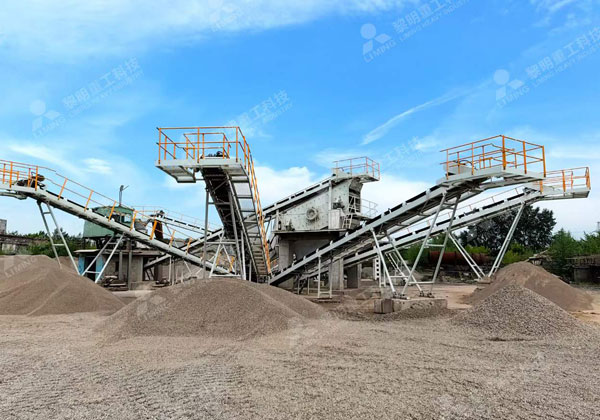Aggregate conveyor belt equipment plays a crucial role in the transportation of bulk materials within various industries, such as mining, construction, and quarrying. These conveyor systems are designed to efficiently move large quantities of aggregates, including gravel, sand, crushed stone, and other bulk materials, from one location to another. The utilization of conveyor belt equipment offers numerous advantages in terms of efficiency, cost-effectiveness, and safety in material handling processes.
One of the primary advantages of aggregate conveyor belt equipment is its ability to transport materials over long distances with minimal manual labor. This automation not only increases efficiency but also reduces the risk of injuries associated with manual handling. The conveyor belt system consists of a continuous loop of materials, typically made from rubber or PVC, supported by rollers or idlers. The design of the conveyor belt allows it to move materials horizontally, inclined, or even vertically, depending on the specific requirements of the application.

In mining and quarrying operations, aggregate conveyor belt equipment is essential for transporting extracted materials from the extraction point to processing facilities. These conveyor systems can cover vast distances, enabling efficient and cost-effective transportation of bulk materials. The conveyor belts are often customized to withstand the harsh conditions of mining environments, including resistance to abrasion, impact, and varying weather conditions.
The design of aggregate conveyor belt systems takes into consideration the nature of the materials being transported. For example, heavy-duty belts with reinforced carcasses may be used for transporting coarse and abrasive materials, while lighter-duty belts are suitable for finer materials. Additionally, conveyor belt systems may incorporate various accessories, such as belt cleaners, skirting systems, and impact beds, to enhance performance and minimize maintenance requirements.
Aggregate conveyor belt equipment also plays a crucial role in construction projects, facilitating the efficient movement of materials on job sites. Whether it’s conveying concrete aggregates, sand, or gravel, these systems contribute to timely and organized construction processes. Portable conveyor systems are often used in construction to easily move materials around the site, adapting to changing project requirements.
In the aggregate industry, the efficiency of conveyor belt equipment is closely tied to overall production capacity. Conveyor systems are often integrated with other equipment, such as crushers, screens, and stackers, to create a seamless material handling process. This integration ensures a continuous flow of materials from extraction to processing and final distribution.
Maintenance and reliability are critical aspects of aggregate conveyor belt equipment. Regular inspection, lubrication, and replacement of worn components are essential to prevent downtime and ensure the longevity of the equipment. Many conveyor systems also feature monitoring technologies, such as belt weighers and sensors, to provide real-time data on the performance of the conveyor, allowing operators to optimize efficiency and troubleshoot issues promptly.
